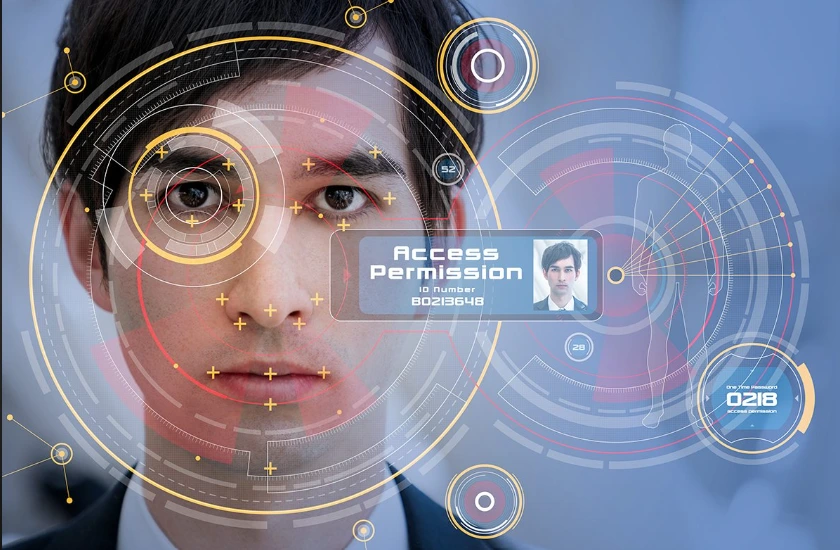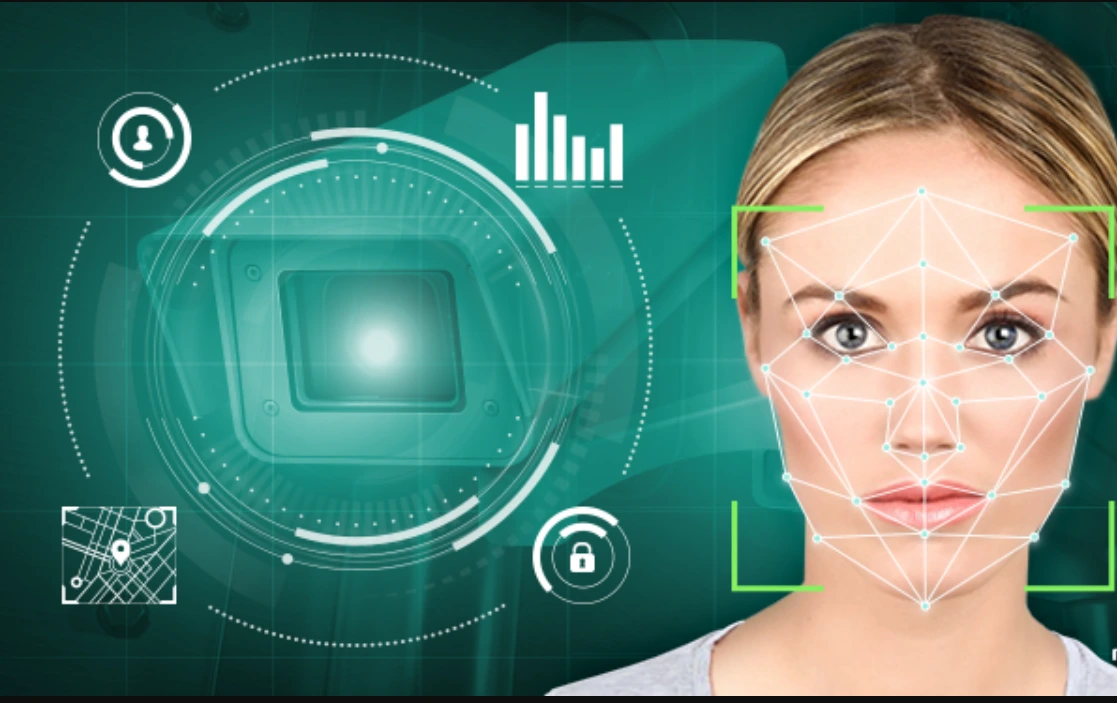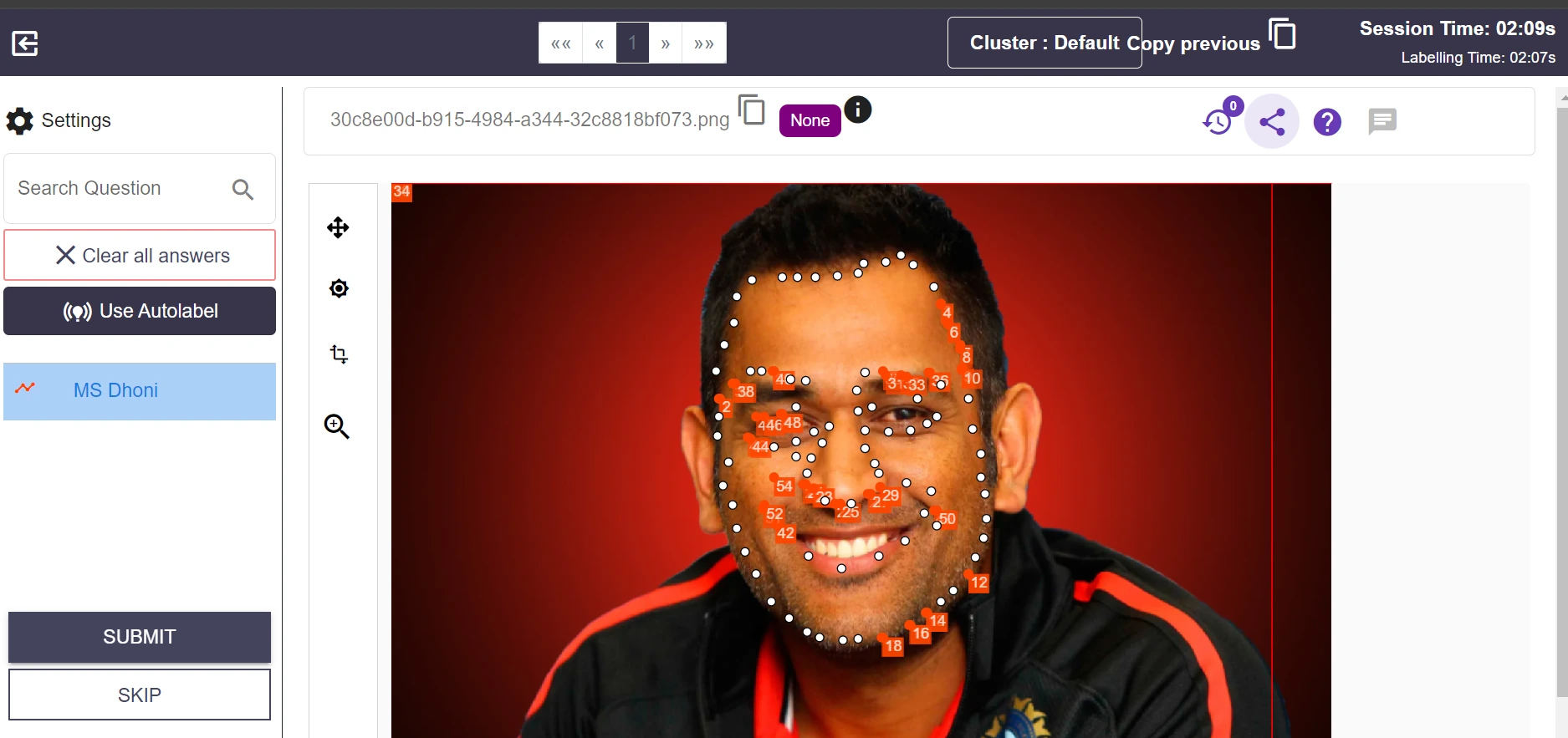How Face Detection Transforms Security and Surveillance

Introduction
In the past 10 years, the worldwide security market has grown a lot, reaching a huge $380.6 billion in 2023.
This big increase shows that we need new and smart ideas to make security better.
Computer Vision is great for this, and it can help make our security systems stronger.
Think of a world where things are always changing, especially in how we keep things safe. One way to do this is by using face detection systems.
It's like magic eyes that can quickly recognize people's faces.
Imagine you're in a big place like a school, and there's a special camera that can see everyone's face. If someone is not supposed to be there, the camera can tell and let the grown-ups know.
These face detection systems can identify faces quickly and help stop problems before they happen.
So, when you see a camera in your school or another place, remember that it might be using face detection to make sure everything is okay.
It's like having a friend always looking out for us.
Using Python for building these face detection systems is like having a powerful tool to make sure everything works smoothly.
This blog meets the demands of ML engineers, product managers, ML subject matter experts, and how Labellerr helps to create a large volume of training data necessary to build high performing ML model to make it possible.
We will explore how it works, look at different ways we can use it, and see all the good things about using Python for face detection systems in this blog.
Table of Contents
- Cracking the Concept of Advanced Face Analysis
- Real-Time Identification for Effective Monitoring
- Enhanced Access Control and Intrusion Prevention
- Addressing Privacy and Ethical Considerations
- Technical Insight: Understanding the Python Code
- How Labellerr Helps
- Conclusion
- Frequently Asked Questions

Cracking the Concept of Advanced Face Analysis
One of the key strengths of a face detection system lies in its ability to perform advanced facial analysis.
Using libraries such as OpenCV and dlib, security teams can harness the power of Python to detect faces in real-time video feeds and extract intricate facial features and expressions.
This level of granularity provides a deeper understanding of individuals under surveillance, contributing to more accurate threat assessments and heightened situational awareness.
The flexibility of Python allows for the implementation of robust facial analysis algorithms, making it a versatile tool for security professionals.

Real-Time Identification for Effective Monitoring
The real-time identification capability of face detection systems is a game-changer in security scenarios.
By comparing live video feeds against a database of known individuals, security personnel can instantly identify persons of interest or unauthorized individuals.
This not only enables proactive response and rapid threat mitigation but also significantly improves incident management.
Python's computational efficiency, coupled with machine learning frameworks like TensorFlow, ensures that these identification processes happen seamlessly, enhancing the overall efficacy of security measures.

Enhanced Access Control and Intrusion Prevention
Integrating face detection and face recognition technology into access control systems adds a layer of security to premises.
Python's flexibility allows for seamless integration with existing security infrastructure, including surveillance cameras, door locks, and alarm systems.
By authenticating individuals based on facial detection, unauthorized access attempts can be thwarted effectively, minimizing security breaches and safeguarding sensitive areas.
The compatibility of Python with hardware interfaces like Raspberry Pi further solidifies its position as an ideal choice for building robust access control systems.

Addressing Privacy and Ethical Considerations
While the deployment of face detection systems brings unprecedented benefits to security, it is essential to address privacy and ethical concerns.
Organizations must establish clear policies regarding data handling, consent, and transparency.
Adhering to industry best practices and regulations, including anonymizing data and implementing secure storage measures, ensures a balance between security and individual privacy.
Python's open-source nature and a vast community of developers contribute to the ongoing refinement of ethical standards in face detection technology.
Technical Insight: Understanding the Python Code
import cv2
import face_recognition
# Load the known faces and their labels
known_faces = []
known_labels = []
# Populate the known_faces and known_labels lists with pre-identified faces and corresponding labels
# Load the video feed from the surveillance camera
video_capture = cv2.VideoCapture(0)
while True:
# Capture each frame from the video feed
ret, frame = video_capture.read()
# Convert the frame to grayscale for face detection
gray = cv2.cvtColor(frame, cv2.COLOR_BGR2GRAY)
# Perform face detection
face_locations = face_recognition.face_locations(gray)
face_encodings = face_recognition.face_encodings(gray, face_locations)
# Loop through each detected face
for face_encoding, face_location in zip(face_encodings, face_locations):
# Compare the face encoding with the known faces
matches = face_recognition.compare_faces(known_faces, face_encoding)
# Check if there is a match
if True in matches:
matched_index = matches.index(True)
label = known_labels[matched_index]
# Draw a rectangle around the face and display the label
top, right, bottom, left = face_location
cv2.rectangle(frame, (left, top), (right, bottom), (0, 255, 0), 2)
cv2.putText(frame, label, (left, top — 10), cv2.FONT_HERSHEY_SIMPLEX, 0.9, (0, 255, 0), 2)
# Display the resulting frame
cv2.imshow(‘Video’, frame)
# Exit the loop if ‘q’ is pressed
if cv2.waitKey(1) & 0xFF == ord(‘q’):
break
# Release the video capture and close the windows
video_capture.release()
cv2.destroyAllWindows()The provided Python code showcases a simple yet powerful implementation of a face detection system. Let's break down the key components:
(i) Importing Libraries: The code begins by importing essential libraries, such as cv2 for video capture and face_recognition for face detection and recognition.
(ii) Known Faces and Labels: The known faces and their corresponding labels are stored in two lists.
These lists need to be populated with pre-identified faces and their respective labels.
(iii) Video Capture Initialization: The code initializes video capture from the surveillance camera, and the video feed is processed frame by frame.
(iv) Face Detection and Recognition: Each frame is converted to grayscale to improve face detection accuracy.
The face_locations function identifies the coordinates of faces, and face_encodings extract the facial features.
(v) Comparison with Known Faces: The face encodings are then compared with the known faces using face_recognition.compare_faces.
If a match is found, the corresponding label is retrieved.
(vi) Visualization and Display: Rectangles are drawn around detected faces, and labels are displayed on the frame.
The resulting frame is displayed using cv2.imshow.
(vii) User Interaction: The loop continues until the user presses 'q', at which point the video capture is released, and windows are closed.
How Labellerr Helps

Imagine you have lots of pictures and videos, and you want the computer to learn who is in each of them. Labellerr makes this easy!
As the above picture illustrates, Labellerr excels at face detection using landmark/key point annotation in pictures.
Using its smart labeling engine, it has analyzed the image accurately and identified the person.
Labellerr's foundation model based auto labeling capability helps it detect and recognize the face really fast.
By harnessing the foundation model's deep learning capabilities, Labellerr ensures that its assessments are not only fast but also highly reliable.
It offers the flexibility of manual annotation for situations where higher accuracy is crucial.
This combination of automated efficiency and the option for manual refinement makes it a versatile and powerful platform.
Here's how it works:
(i) Connect your pictures and videos: Labellerr can take your pictures and videos from places like AWS, GCP, or Azure and put them in one easy-to-use platform.
(ii) Create and manage projects: Labellerr helps you organize your work. You can tell it what to focus on, like faces in pictures.
(iii) Labeling engine: Labellerr has a great labeling engine. It helps you mark and describe things in the pictures, like faces.
It can do this super fast, saving time and money.
(iv) Export Data: You can export the annotated information in different formats like CSV or JSON.
So, Labellerr is a platform that helps you teach computers to recognize faces easily and quickly!
Conclusion
Face detection systems signify a change in security and monitoring practices.
The potential uses are numerous, from improved access control and real-time identification to advanced facial analysis.
Given the ongoing emphasis on security measures by organizations, Python's wide ecosystem of libraries and adaptability make it a valuable tool for creating reliable and scalable face-detection solutions.
However, to achieve a harmonious balance between security requirements and individual rights, these technologies must be approached with a significant emphasis on ethical issues and privacy.
With the advent of intelligent monitoring, computer vision, and Python have become an increasingly potent tool for protecting our communities and environments.
Frequently Asked Questions
1. How a face detection system works?
A face detection system operates by utilizing computer vision algorithms to analyze input images or video frames and identify the presence and location of faces within them.
The process typically involves multiple stages, starting with image preprocessing to enhance features.
The system then employs pattern recognition techniques to detect facial features such as eyes, nose, and mouth.
Modern face detection systems often utilize machine learning algorithms, such as Haar cascades or deep neural networks, to learn and generalize patterns of facial features from training data.
Once a face is detected, the system may proceed with additional tasks such as facial recognition, analysis, or tracking, depending on the application's specific requirements.
2. What is face detection and recognition?
Face detection is the process of identifying and locating human faces within images or video frames.
It involves using computer vision techniques, such as pattern recognition and machine learning algorithms, to analyze visual data and detect the presence and location of faces.
On the other hand, face recognition is a more advanced process that goes beyond detection and involves identifying and verifying a person's identity based on facial features.
It entails comparing the detected facial features with a database of known faces to recognize or authenticate individuals.
Both face detection and recognition play crucial roles in applications ranging from security and surveillance to user authentication in smart devices.
3. How can sensors improve the accuracy of a face recognition system?
Sensors play a vital role in improving the accuracy of a face recognition system by providing additional data and enhancing the quality of input information.
Depth sensors, such as Time-of-Flight (ToF) cameras, can capture three-dimensional facial features, making it more challenging for the system to be deceived by 2D images or masks.
Infrared sensors are effective in low-light conditions, ensuring reliable face detection even in challenging lighting environments.
Combining RGB (color) sensors with depth and infrared sensors can provide a more comprehensive and accurate representation of facial features, contributing to increased precision in face recognition algorithms.
Overall, integrating various sensors offers a multi-modal approach that enhances the robustness and accuracy of face recognition systems across diverse environmental conditions.

Simplify Your Data Annotation Workflow With Proven Strategies
.png)


